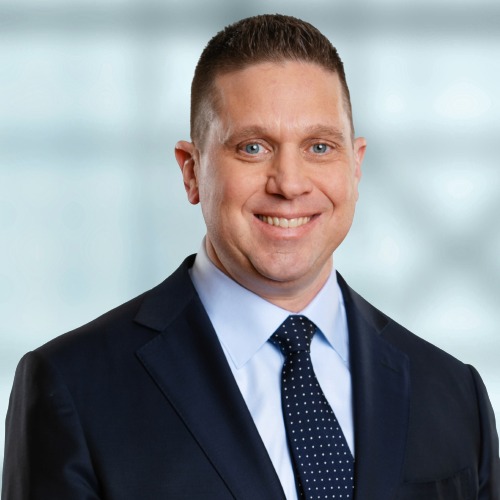“Trainees are the heart of our research community,” said Dr. Jennifer Campos, KITE’s Associate Director, Academic.
This fall, UHN’s KITE Research Institute welcomed about 200 trainees and postdoctoral researchers to new roles across the Institute.
They will join 1,800 across UHN. “Trainees and postdoctoral researchers drive innovation, discovery, and excellence in research,” says Jordan Beck, Project Coordinator at the Office of Research Trainees (ORT). “Their curiosity, creativity, and dedication are pivotal to research and innovation at UHN.”
To welcome them, KITE Trainee Executive Committee (KITEC) organized an orientation earlier this month. It offered trainees a chance to network, gain insight into the UHN ecosystem, and learn about the support available to them, from the new peer mentorship program to KITEC-run events.
“The KITE Institute is an incredible place where trainees can transform their curiosity into innovation and their ideas into real-world impact,” says Madalena Liougas, president of the executive committee. “KITEC supports them by championing collaboration and mentorship, creating opportunities that help trainees grow as researchers and individuals.”
Several senior leaders from the Institute spoke to trainees at the orientation, including Dr. Jennifer Campos, KITE’s Associate Director, Academic, and Anthony Palma, Director of Partnerships & Strategic Initiatives.
“Trainees are the heart of our research community,” Dr. Campos said in an interview after the event. “Through mentorship, interdisciplinary collaboration, and access to world-class resources, they will lead the next generation of discoveries in prevention, rehabilitation, and healthy aging.”
Three Trainees on Their Path to KITE
KITE trainees share what brought them to KITE and what they hope to accomplish during their time here.
Chris Kwon, master's student in biomedical engineering at the University of Toronto
Q: What led you to KITE?
I didn't plan on pursuing this field when I first started my undergraduate engineering degree, but I got drawn to this field when I myself started experiencing chronic pain and kept getting misdiagnosed for years. This got me thinking about whether pain can be quantified, and, if so, whether that can help facilitate more accurate, faster diagnoses. It's more than just a research question for me at this point; it's also a personal mission to find answers.
Q: What are you hoping to accomplish during your time at KITE?
I’m looking forward to becoming an expert in this topic area! There are other related topics I want to explore (including applying neuromodulation therapy to treat pain, hopefully making use of pain-associated biomarkers), and I'll need to become proficient in the topics I'm currently working on before that.
I’m also hoping to publish my findings, gain deeper insight in this field, and get more clinical experience (because patients are people, not just data!)
Lewa Babalola, master’s student in Psychological Science at Toronto Metropolitan University (TMU)
Q: What makes KITE a good fit for you?
In my undergrad, I researched how people with misophonia emotionally react to different sounds and what that can tell us about the connection between sound and emotion. That project really shaped how I think about perception; not just as something we experience, but as something that can deeply affect well-being. I think that perspective, along with my curiosity and openness to learning, fits well with KITE’s approach to research.
Q: What attracted you to KITE?
I was drawn to KITE because of its focus on research that blends neuroscience, engineering, and psychology to improve people’s everyday lives. I love that you get to work with experts from different fields, and that the work has a real-world impact. KITE is a team that’s pushing the boundaries of how we understand human perception, and I wanted to be a part of that.
Q: What are your goals for your time at KITE?
I’m eager to get hands-on with data collection and analysis and to learn new tools and methods for sensory and motion research. Being surrounded by people who think about problems from different perspectives is really motivating—I'm excited to be pushed to grow.
Lianna Montanari, PhD student in Rehabilitation Science at the University of Toronto and vice-president of communications at KITEC
Q: What inspired you to join KITE?
I was drawn to KITE because it is a leading rehabilitation research institute, and I was particularly inspired by the innovative, interdisciplinary work of my supervisor and other researchers. My interest in rehabilitation research began when a family member received inpatient care at Toronto Rehabilitation Institute, so conducting my research here now feels like a full-circle moment.
Q: What are you most looking forward to during your time at KITE?
In my current study, I use a virtual reality-based navigation task to identify early signs of cognitive decline in older adults at greater risk, such as those with hearing loss. This research aims to facilitate the proactive management and support of the cognitive and functional abilities of older adults.
My aim is to expand my professional network and build lasting relationships with collaborators to continue growing my research potential beyond my time at KITE.
Overall, I hope to gain as much knowledge and experience as possible so I can make a meaningful difference in the lives of older adults.




